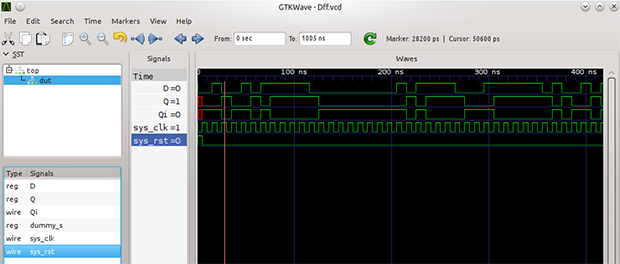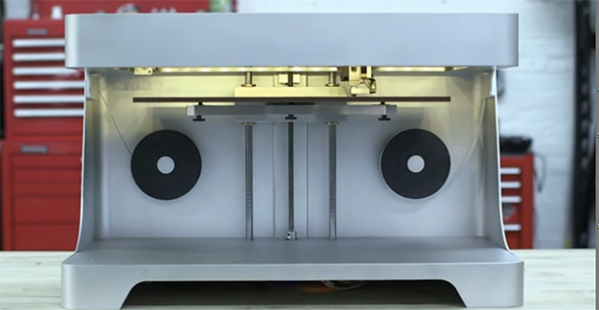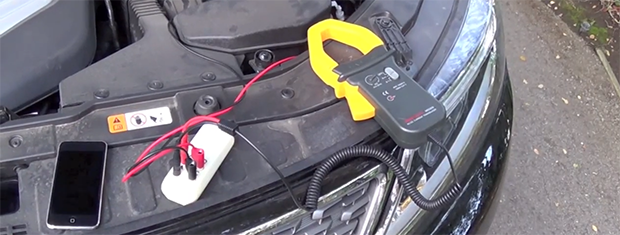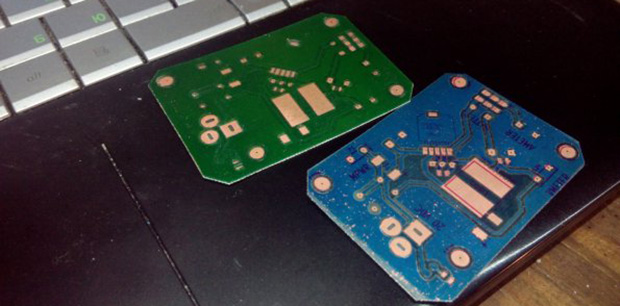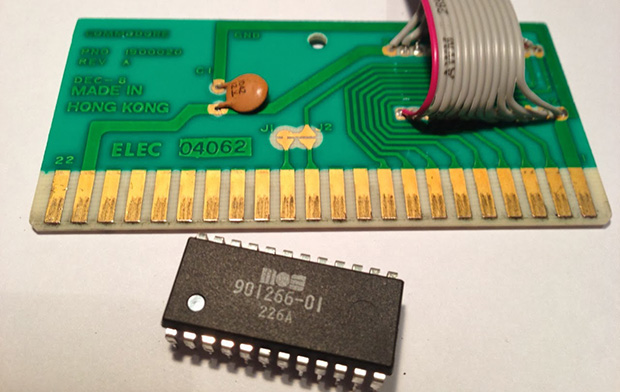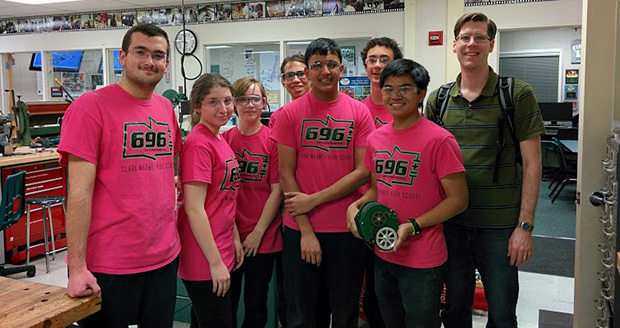
Thought Hackaday’s trip to LA was all about hackerspaces, parties, and rummaging through piles of awesome junk? Nope. We’re also tasked with some community outreach that brought us to the Clark Magnet High School in Glendale, CA.
This isn’t your usual high school. Each year, it accepts around 300 new freshmen (grade 9) from the other high schools in the Glendale district. Selection is done through a lottery system, ensuring it’s not just the kids “on the good side of the tracks” or whose parents are active in the PTA that are selected; about 52% of the students at Clark can be classified as at or below the poverty line.
The curriculum? Instead of stopping at the classical comprehensive high school education, the students at Clark Magnet are focused primarily on the STEM fields. They’re also the home base for Team 696, a FIRST robotics team that has done very well in robotics competitions. A few mentors from JPL and IBM help the students out on their projects, and the head of Clark’s engineering program, [David Black], as well as the principal, were once students themselves.
As far as their engineering program goes, they have a very impressive setup; their workshop features a Haas minimll with a 10-tool carousel, a huge CNC wood router, more than one 3D printer, a small woodshop, a CAD classroom – in short, enough tools to make just about anything. Because Clark Magnet is in sunny California, they’ve been able to get a few grants and build a 358kW peak solar array behind the football field. It’s enough to keep the lights on, and the electric bill down, allowing them to hire an additional teacher or two.
In addition to an impressive engineering/shop class, there’s also an audio and video production suite filled with Mac Pros, cameras, mixing boards and 96 Terabytes of storage. It’s not an exaggeration to say this high school is better equipped than some colleges.
Clark also does some other very interesting stuff outside of class; they’ve launched and recovered high altitude balloons, traveled to elementary schools to play with Lego robots, and some students also have impressive home-built projects they bring in to tinker with. We saw a homebrew quadcopter and a very awesome Mecanum wheel robot that we expect to see in the Hackaday tip line shortly.
Despite how awesome the Clark engineering department is, and how capable the students are, they’ve said the FIRST robotics team has been getting a lot of flak from the rest of the maker community. Apparently some people see an amazing engineering program as a waste of resources. From our short time at Clark, we think nothing could be further from the truth. These students are quickly becoming experts at CAD design and CNC operations. They’re competent embedded programmers and well on their way to becoming awesome engineers. Students who don’t want to build a robot or program firmware get involved in project planning, marketing, and all the rest of the business that goes into running a initiative of this size. It’s a truly awesome program, and I have to say I’m a little bit jealous I didn’t graduate from Clark.
Gallery of pics and two videos below: going over the workshops at Clark and a robot project. Our fanboyism for Clark also demands we link to the (very small and very resonable) Kickstarter the FIRST robotics team is using for their 2014 budget.
Continue reading “Hackaday Visits The Clark Magnet High School” →
